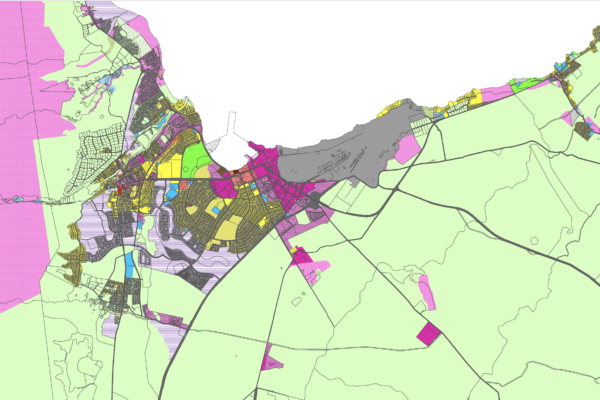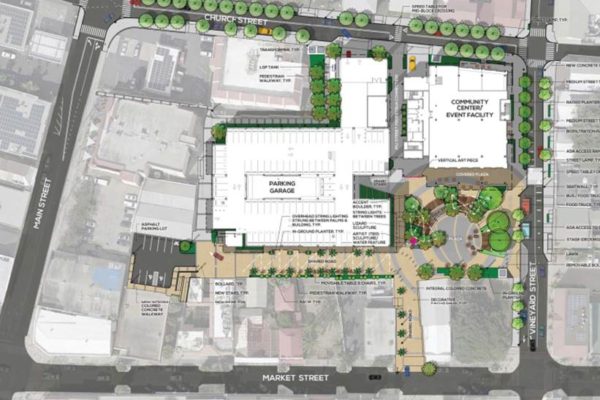Don, I read your comments about the malls in today’s Maui News.
I agree that the council, the legislative body of county government, cannot do much about the malls at this time. The matter is in the hands of the executive department and, of course, the state Land Use Commission.
I disagree with your statement that the project was approved 9-0 when Wayne Nishiki represented south Maui. The county council has never approved this project. Rather, it approved:
(1) A new community plan in 1998 that identifies the subject 88 acre parcel as “LI” on the attached map, defined as “. . . warehousing, light assembly, service and craft-type industrial operations” and stating in explicit detail on page 18, paragraph k, that the parcel is to contain light industrial services with limited “. . . retail business or commercial activities to the extent that they are accessory or provide service to the predominate light industrial use.”
and
(2) It rezoned the property M-1 light industrial based on the same light industrial project scheme Kaonoulu Ranch presented to the LUC featuring 123 fee simple lots to be sold to small businesses for light industrial use, and subject to the community plan. As you know, the county code states that light industrial zones are to contain “mostly” light industrial uses. In any event, the Maui County Code clearly states that zoning must implement community plans, not the other way around.
The mayor, Mr. Jencks and you have made public statements that community plans are mere guidelines that do not have to be followed. This is not what Hawaii courts have said. In fact they’ve said the opposite. You are likely aware of the Gatri decision made by the Hawaii Supreme Court in which the court stated without reservation that the Kihei Makena Community Plan has the force and effect of law; it is not a mere guideline. Despite this clear language, the county and others have said that the Gatri holding is restricted to SMA matters. I believe this is an erroneous and unsupportable conclusion, one that is confirmed in another case recently published that I want to bring to your attention, Leone v. County of Maui (see attached, decided June 22, 2012). While Leone involved beachfront property within the coastal zone, the property was not subject to SMA rules. With this in mind the court stated the following:
In the second issue before it, the supreme court held that the Director did not err in his decision not to process GATRI’s application because it was inconsistent with the Community Plan, which in the County of Maui is a part of the general plan, and which contains a specific, relatively-detailed land use plan. GATRI, 88 Hawai‘i at 112–15, 962 P.2d at 371–74. The supreme court based its conclusion on its interpretation of the governing law, reflected in its holding that the Community Plan “was adopted after extensive public input and enacted into law by the Maui County Council … as an amendment to section 2.80.050 of the Maui County Code”, “[i]t is part of the general plan of Maui County,” and, “[t]herefore, it has the force and effect of law and a proposed development which is inconsistent with the [Community Plan] may not be awarded an SMA permit without a plan amendment.” Id. at 115, 962 P.2d at 374.8
*968 Accordingly, the supreme court has determined that the Community Plan before us is a legislative enactment, with the full force and effect of law.
Footnote 8 states:
|
8
|
We note that the developer in GATRI sought an SMA minor use permit for a proposed “development” under the CZMA. 88 Hawai‘i at 109–10, 962 P.2d at 368–69. Here, by contrast, the proposed use-the construction of single-family residences-is not considered a “development” under the CZMA unless the authority finds a cumulative impact or significant environmental effects. HRS § 205A–22. Although the CZMA does not expressly require consistency for proposed land uses that are not considered “developments,” the Maui County Code (MCC) renders the Community Plan binding on all county officials. MCC 2.80B.030(B) (2006). Under the express language of the code, neither the director nor the Planning Commission may approve land uses that are inconsistent with the Kihei–Makena Community Plan. Id.; see also Pono v. Molokai Ranch, Ltd., 119 Hawai‘i 164, 192, 194 P.3d 1126, 1154 (App.2008) (“Under the MCC, before the [Department of Public Works and Waste Management] or any other county agency issues a permit, the agency must ensure that the project in question adheres to the specifications of the general plan and community plans of Maui County”), abrogated on other grounds by County of Hawai‘i v. Ala Loop Homeowners, 123 Hawai‘i 391, 235 P.3d 1103 (2010); see also MCC 19.04.015(A) (1991) (purpose of zoning is to regulate land usage in accordance with general and community plans); MCC 19.510.040(A)(4)(b) (1991) (change of zoning must comply with community plan). . . .
|
Leone dispels any illusion that the Gatri case is limited to property subject to SMA/CZMA, and because the county was a party to the decision, it is bound by the decision. No longer can the county or developers maintain that the Kihei Makena Community Plan is a mere guideline to be followed or disregarded at will. The KMCP is a legislative act that has the force and effect of law. It can be amended if need be, and there is a process for doing so, but the amendment process has to be followed: (a) there must be a public hearing in the affected area and (b) submission of an EA or EIS at the time a community plan amendment application is filed. As you know, neither Honua’ula nor Eclipse has undertaken to amend the community plan.
I look forward to the outcome of the upcoming LUC hearing and I expect the landowners to be found in violation of the 1995 Order. Regardless, it is time for the County of Maui and its elected representatives to understand that our community plans are the voice of the people with the force and effect of law. They must be followed. We want a government of law, not of men.
Mark Hyde



